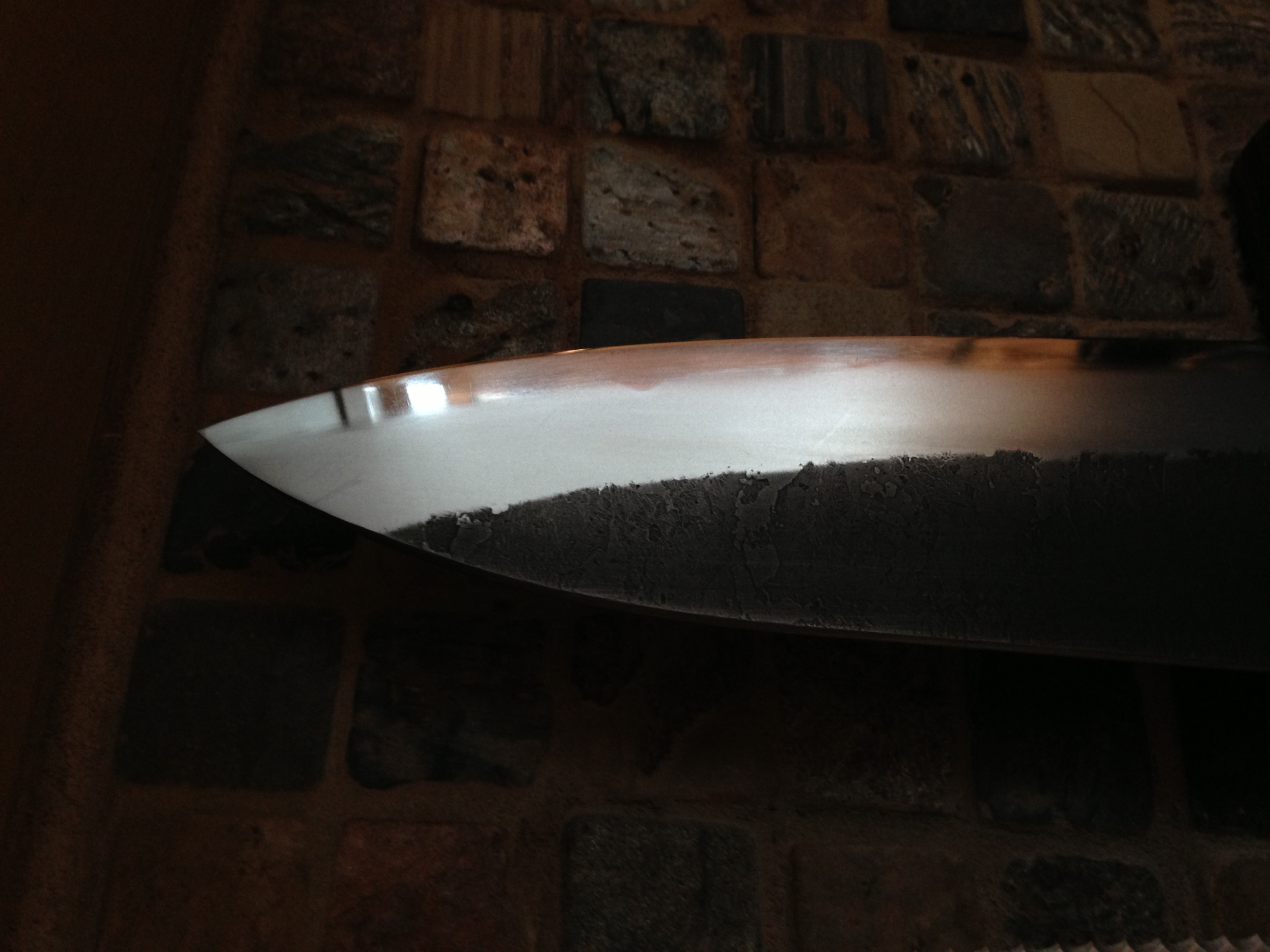- Joined
- Jun 13, 2013
- Messages
- 1,796
- Reaction score
- 23
I scratched up my Kochi 240mm carbon gyuto a bit while sharpening on the 500 stone. Would abrasive pads lessen the scratches? Its mostly on the raw edge. I'd have to be careful to avoid the kurouchi. Any advice? Everything from how-to to leave it alone is welcomed  .
.







